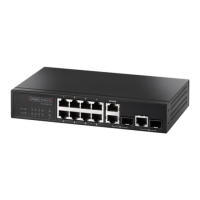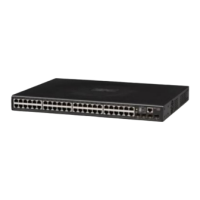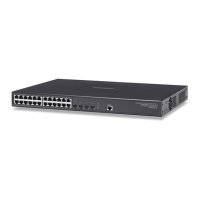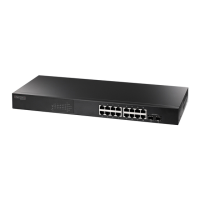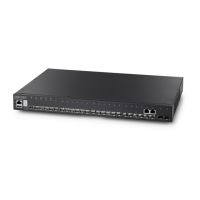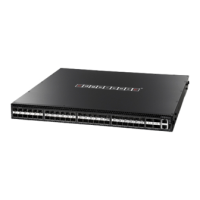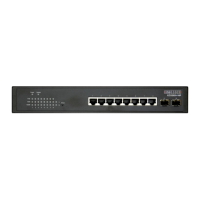C
HAPTER
6
| VLAN Configuration
IEEE 802.1Q Tunneling
– 180 –
1. New SPVLAN tags are added to all incoming packets, no matter how
many tags they already have. The ingress process constructs and
inserts the outer tag (SPVLAN) into the packet based on the default
VLAN ID and Tag Protocol Identifier (TPID, that is, the ether-type of the
tag). This outer tag is used for learning and switching packets. The
priority of the inner tag is copied to the outer tag if it is a tagged or
priority tagged packet.
2. After successful source and destination lookup, the ingress process
sends the packet to the switching process with two tags. If the
incoming packet is untagged, the outer tag is an SPVLAN tag, and the
inner tag is a dummy tag (8100 0000). If the incoming packet is
tagged, the outer tag is an SPVLAN tag, and the inner tag is a CVLAN
tag.
3. After packet classification through the switching process, the packet is
written to memory with one tag (an outer tag) or with two tags (both
an outer tag and inner tag).
4. The switch sends the packet to the proper egress port.
5. If the egress port is an untagged member of the SPVLAN, the outer tag
will be stripped. If it is a tagged member, the outgoing packets will
have two tags.
Layer 2 Flow for Packets Coming into a Tunnel Uplink Port
An uplink port receives one of the following packets:
◆ Untagged
◆ One tag (CVLAN or SPVLAN)
◆ Double tag (CVLAN + SPVLAN)
The ingress process does source and destination lookups. If both lookups
are successful, the ingress process writes the packet to memory. Then the
egress process transmits the packet. Packets entering a QinQ uplink port
are processed in the following manner:
1. If incoming packets are untagged, the PVID VLAN native tag is added.
2. If the ether-type of an incoming packet (single or double tagged) is not
equal to the TPID of the uplink port, the VLAN tag is determined to be a
Customer VLAN (CVLAN) tag. The uplink port’s PVID VLAN native tag is
added to the packet. This outer tag is used for learning and switching
packets within the service provider’s network. The TPID must be
configured on a per port basis, and the verification cannot be disabled.
3. If the ether-type of an incoming packet (single or double tagged) is
equal to the TPID of the uplink port, no new VLAN tag is added. If the
uplink port is not the member of the outer VLAN of the incoming
packets, the packet will be dropped when ingress filtering is enabled. If
ingress filtering is not enabled, the packet will still be forwarded. If the
VLAN is not listed in the VLAN table, the packet will be dropped.
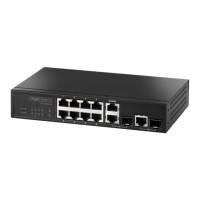
